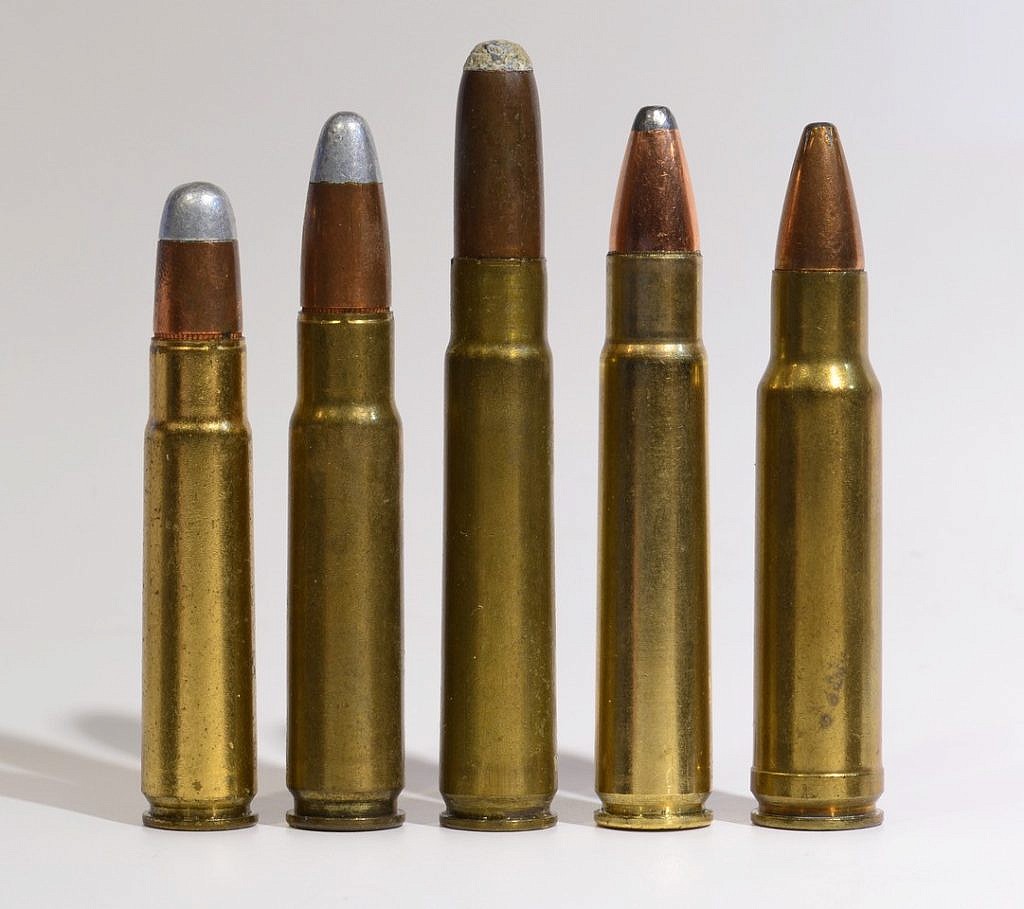
by Terry Wieland
As I write this, the annual SHOT Show is taking place in Las Vegas, and announcements are pouring forth from makers of everything from riflescopes to exotically named bullets.
The other day, my in-basket proclaimed, in rapid succession, a new cartridge from Remington, factory ammunition from its stable-mate, Federal Cartridge, and Henry preparing to chamber it in various rifles. The new number in question is not yet another, super-duper, long-range wunderkind, but a round that would not have been out of place in he 19th century: A rimmed, straight-walled .35, designed specifically for lever-actions and single-shots.
Even as long ago as 1923, such a cartridge would have been hopelessly passé. But in 2023? What’s happening?

The short answer is, what’s happening are changing state restrictions on what you can use to hunt deer, with some previously shotgun-only states now allowing the use of rifles in certain areas, but only if they use straight-walled, rather than bottle-necked, cartridges. Obviously, this was intended to allow such benign old-timers as the .32-40 and .38-55—for which there is no shortage of rifles floating around, by the way—but the bureaucrats and game-law fabricators reckoned without the inventiveness of the American shooting industry.
Not to belabor it, but let’s consider this for a minute: The .500 Nitro Express has straight walls, as do the .577 NE, .600 NE, and even the .700 H&H. Conversely, the .25-20, .32-20, and .25-35, are bottlenecked, and so would not, presumably, be allowed. Even the .38-40 is technically bottle-necked. Like many laws governing technical issues which are not understood by bureaucrats, this one makes little sense.
Anyway, back to the new .35, which bears the unlovely name of “.360 Buckhammer.” Leaving aside the usual corporate hyperbole—the “ultimate straight-walled cartridge!”—this is, in essence, our old, old, old friend, the .35 Remington, minus its shoulder and plus a rim. Ballistically speaking, one could not tell any difference whatever: The new .360 fires a 200-grain bullet at 2,215 feet per second, while the older round fired the same bullet at 2,210 fps.

What Remington purports to have done is take the .30-30 case, neck it up to .358, blow it out to remove any vestigial shoulder, and voilà. Another way would have been to cut about a quarter-inch off the .32-40, neck it up, and there you have it.
Well, in fact, what you have is a cartridge that came along in the 1890s. When .32-40 target bores lost their edge, they were bored out to .33, re-rifled and carried on; when those wore out, they were necked up to .35, and then to .375. Admirable as Remington’s new cartridge might be, it’s hardly ground-breaking.
However, please do not get me wrong: As an admirer of the .35 in all its guises for going on 60 years now, it’s pleasant to welcome another into the fold.
The first rifle I ever bought was a .35 Remington. After studying the available literature, my 15-year old brain concluded the .35 Remington was better for whitetails, and the numerous black bears we had in our vicinity, and that the Marlin 336 was better than the Winchester 94. I became a devoted thirty-fiver, and over the years acquired a .358 Norma, 9×57 Mauser, 9×56 Mannlicher-Schönauer and, most recently, a 9x72R, as well as a new barrel chambered in .357 Maximum for a lovely old Stevens 44½.
The .360 Buckhammer—how I hate that name!—is just the latest in the modest .35-caliber revival. Winchester came out with the rimless .350 Legend four years ago, a slightly less powerful number for ARs and bolt rifles. All of them are intended to shoot a 200-grain bullet, with some going a little lighter, others a little heavier, but all in or around 2,000 fps.
It’s a combination that has more than proven itself over almost a century and a half. Europeans love it for driven boar, Vermonters chase whitetails, Texans hunt feral hogs, and somewhere, someone is—I hope—hunting whitetails with that Marlin 336 I parted with in 1971 to help finance my first trip to Africa.
Will I overcome my abhorrence for the name and get one of the new .360s? It depends what rifle is immediately available. If I had a Stevens 44½-actioned rifle in .32-40 or .38-55, I’d consider having an additional barrel made for it, although I’m not sure what, if anything, I’d gain over the .38-55 using smokeless powder. Little or nothing, I suspect. And, in practical terms, little or nothing over the .357 Maximum barrel I just acquired. (I won’t have a third barrel made for that one because the larger rim diameter would require a new extractor as well.)
There is a long list of .35s that were tried and went either nowhere or not very far: .358 Winchester, .350 Remington Magnum, my own beloved .358 Norma, the .358 Shooting Times Alaskan, Bryce Towsley’s wildcat .350 UMT. If you want to make your head swim, get a copy of the latest Cartridges of the World, and look for .358s in the chapter on wildcats. The only recent .35 factory round you could call really successful is the .35 Whelen (a .30-06 necked up, and nearing a century old itself, in wildcat form.)
One indisputable advantage of the renewed interest in 358s should be either the continuation of some existing fine bullets, such as Speer’s 180-grain flat point, or the addition of new ones. If so, that will be one more excuse, as if I needed one, to go out and shoot my .35s.
Gray’s shooting editor, Terry Wieland, dates his stubborn iconoclasm to that long-ago decision in favor of the .35 over the .30-30, and the Marlin instead of the Winchester. He’s been espousing underdogs ever since.
